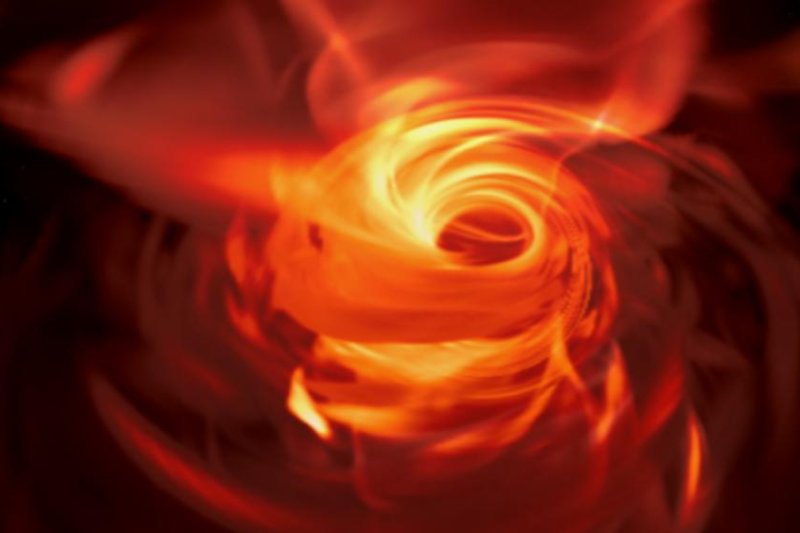Scientists combined several different models to create the first-ever visual simulation of the supermassive black hole at the center of our galaxy. Photo by Springer
Nov. 19 (UPI) -- For the first time, scientists have brought the black hole at the center of the Milk Way to life -- visually, that is.
Astrophysicists used the latest computer models describing Sagittarius A* to construct a virtual reality simulation of the supermassive black hole. The rendering can be viewed from 360 degrees and can be experienced using a virtual reality headset.
Scientists described their virtual creation in a new paper, published Monday in the journal BioMed Central.
"Our virtual reality simulation creates one of the most realistic views of the direct surroundings of the black hole and will help us to learn more about how black holes behave," Jordy Davelaar, astrophysicist at Radboud University Nijmegen in the Netherlands, said in a news release. "Traveling to a black hole in our lifetime is impossible, so immersive visualizations like this can help us understand more about these systems from where we are."
Davelaar and his colleagues believe their 3D rendering could both aid the study of black holes and foster an interest in astrophysicists among the general public.
"The visualizations that we produced have a great potential for outreach," Davelaar said. "We used them to introduce children to the phenomenon of black holes, and they really learned something from it. This suggests that immersive virtual reality visualizations are a great tool to show our work to a broader audience, even when it involves very complicated systems like black holes."
The mass of the black hole at the center of our galaxy is four million times more massive than the sun. To create the massive structure in virtual reality, scientists first simulated the dynamics of plasma that surrounds the black hole. Next, scientists used sophisticated models to simulate the behavior of light within the complex system.
For those without access to a virtual reality console, scientists created a video to showcase the 3D simulation.
"In the video above you travel towards the black hole in the center of the galaxy. In the distance, you see the stars," Davelaar wrote in a blog update. "Due to the strong pull of the black hole, the view gets deformed, and you see a dark patch in the sky that bends the starlight around it."
"When matter starts to accrete onto the black hole, it lights up, the closer it gets, the more light it emits, due to the presence of magnetic fields a magnetic outflow," Davelaar wrote. "A jet is launched from the accretion flow, allowing some of the matter to escape."















